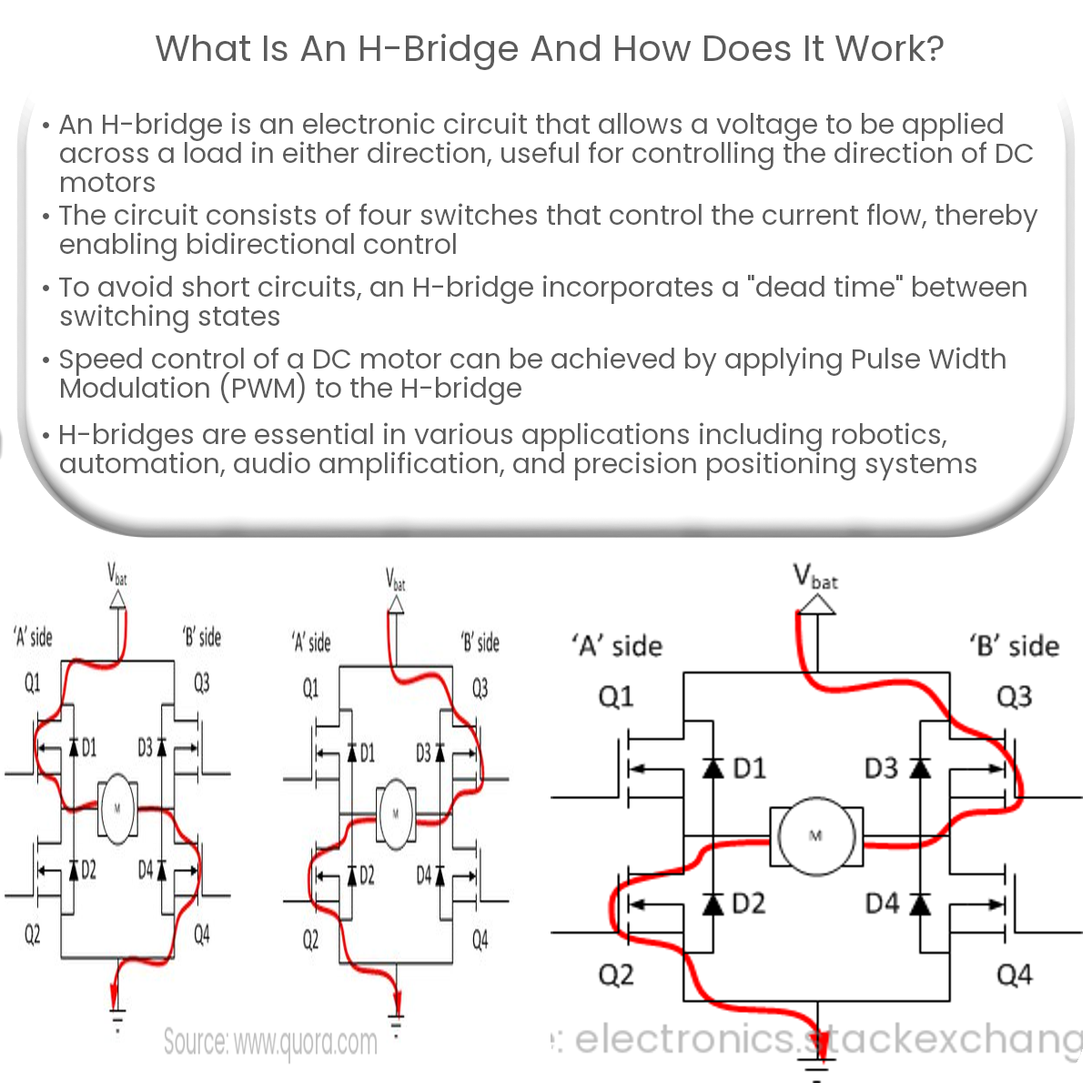An H-bridge is an electronic circuit that controls the direction of a DC motor by altering the voltage across the motor, often used in robotics.
Introduction to H-Bridge
An H-bridge is a widely used electronic circuit that enables a voltage to be applied across a load in either direction. It consists of four switches, typically in the form of transistors or MOSFETs, arranged in an “H” configuration. The H-bridge is commonly used to control the direction of rotation of DC motors in applications such as robotics, automation, and automotive systems.
Working Principle of H-Bridge
The H-bridge works by controlling the switches in pairs, with one pair responsible for driving the load in one direction, and the other pair for driving it in the opposite direction. When the top-left and bottom-right switches are closed, current flows from left to right, while closing the top-right and bottom-left switches causes the current to flow from right to left. This change in current direction allows for bidirectional control of a DC motor.
It is important to ensure that both switches in a diagonal pair are never closed simultaneously, as this would cause a short circuit. To avoid this issue, H-bridge circuits typically incorporate a “dead time” between switching states, allowing one set of switches to fully turn off before the other set turns on.
PWM and Speed Control
Speed control of a DC motor can be achieved by applying Pulse Width Modulation (PWM) to the H-bridge circuit. PWM involves varying the duty cycle of a square wave signal to control the average voltage across the motor, thus changing its speed. By adjusting the duty cycle, the motor speed can be controlled with precision, making H-bridges suitable for applications requiring variable speed control.
Applications of H-Bridges
H-bridges are commonly used in various applications, such as:
- DC Motor Control: As mentioned earlier, H-bridges are widely used for controlling the direction and speed of DC motors in robotics, automation, and automotive systems.
- Stepper Motor Control: In conjunction with a microcontroller, H-bridges can be used to drive stepper motors, which are widely used in precision positioning systems.
- Audio Amplification: H-bridge circuits can be utilized in audio amplifiers to create Class D amplifiers, known for their high efficiency and compact size.
In conclusion, H-bridges are versatile and essential components in various electronic systems, allowing bidirectional control and efficient operation of loads such as DC motors, stepper motors, and audio amplifiers.


